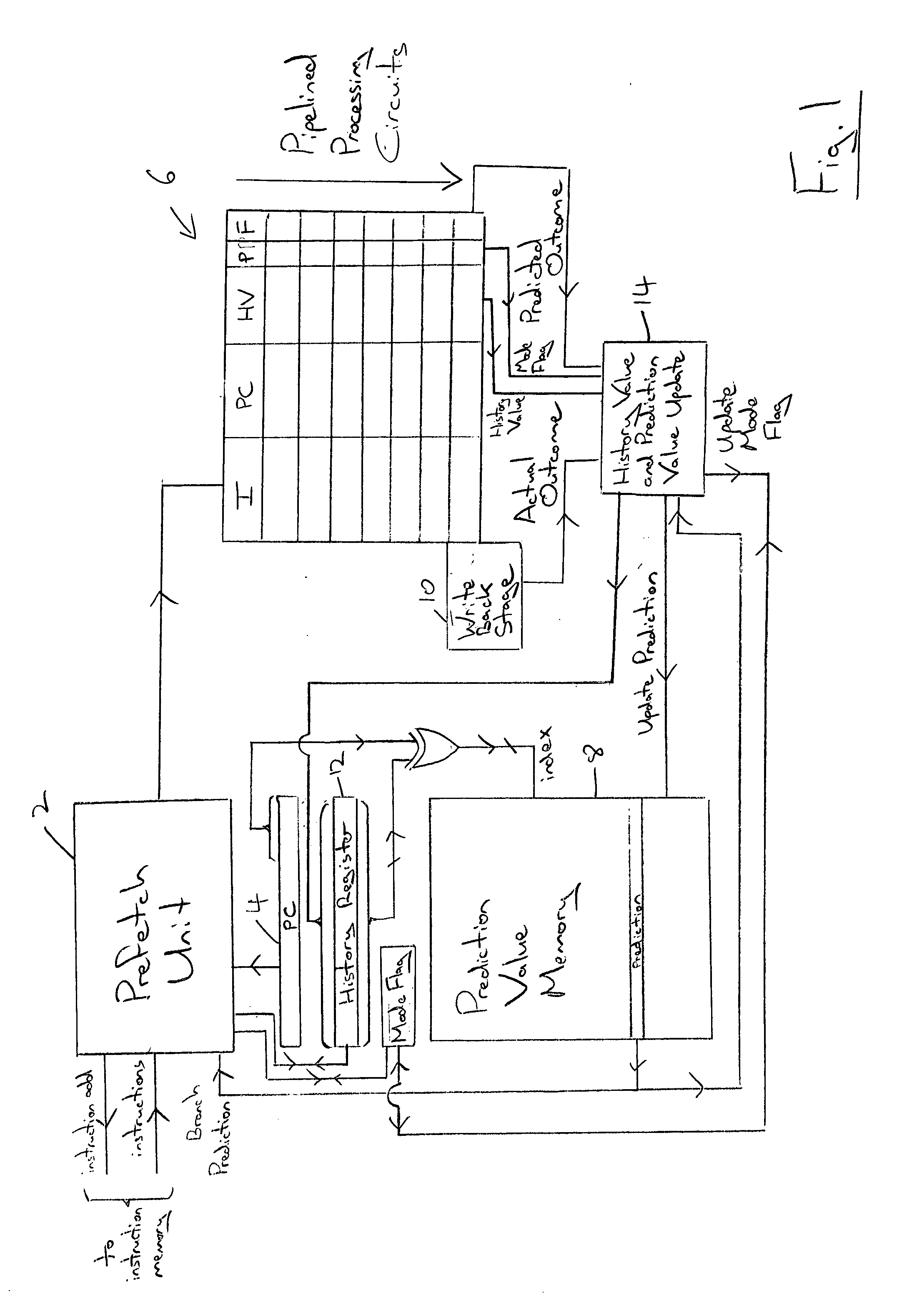Loop end prediction
a prediction and loop technology, applied in the field of data processing systems, can solve the problems of accurately predicting loop ends, significant processing performance penalties, cost and power consumption disadvantages, etc., and achieve the effect of increasing circuit complexity or cos
- Summary
- Abstract
- Description
- Claims
- Application Information
AI Technical Summary
Benefits of technology
Problems solved by technology
Method used
Image
Examples
Embodiment Construction
[0040]FIG. 1 schematically represents a portion of a data processing circuit including a prefetch unit 2, which serves to fetch program instructions to be executed from an instruction memory. These instructions are stored at respective instruction memory addresses within the instruction memory and the prefetch unit is supplied with a program counter value from a program counter register 4 to direct the fetching of instructions. The instructions are fetched in a contiguous sequence until a branch instruction causes a branch in program flow and triggers fetching from a new instruction memory address and an update of the program counter register 4 to reflect the branch in program flow.
[0041] The instructions which may be executed also include conditional branch instructions for which it is not known whether or not a branch in program flow will be the actual outcome until they have progressed someway down the pipeline processing circuits 6. Accordingly, when the condition branch instru...
PUM
 Login to View More
Login to View More Abstract
Description
Claims
Application Information
 Login to View More
Login to View More - R&D
- Intellectual Property
- Life Sciences
- Materials
- Tech Scout
- Unparalleled Data Quality
- Higher Quality Content
- 60% Fewer Hallucinations
Browse by: Latest US Patents, China's latest patents, Technical Efficacy Thesaurus, Application Domain, Technology Topic, Popular Technical Reports.
© 2025 PatSnap. All rights reserved.Legal|Privacy policy|Modern Slavery Act Transparency Statement|Sitemap|About US| Contact US: help@patsnap.com



